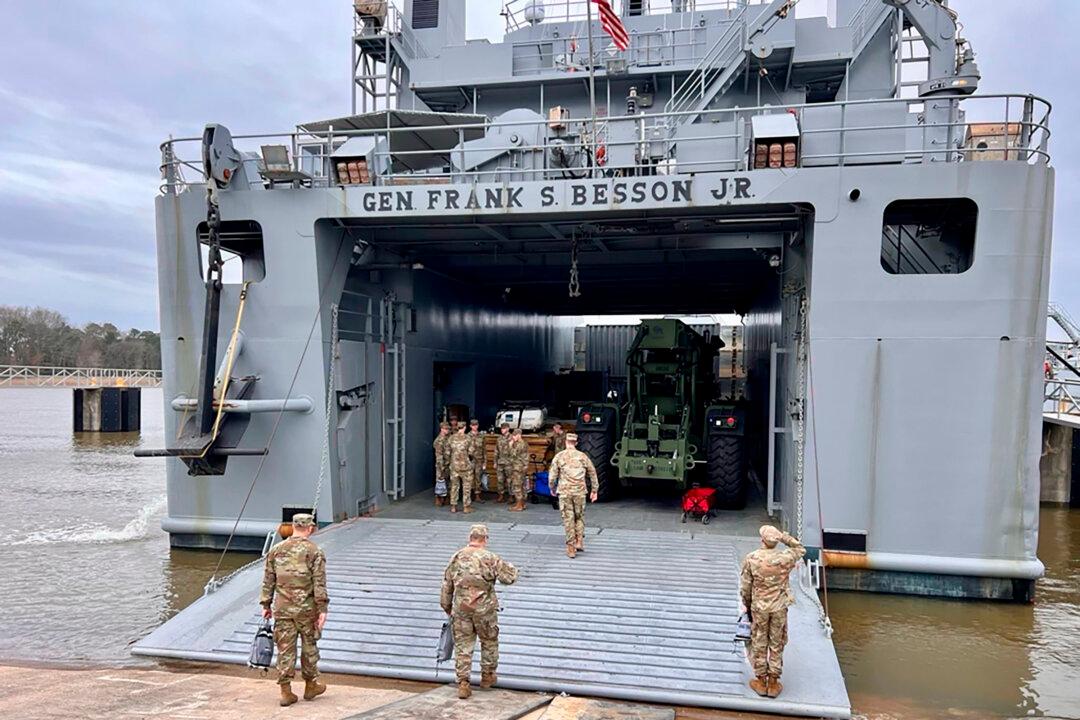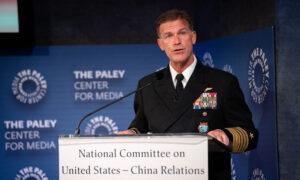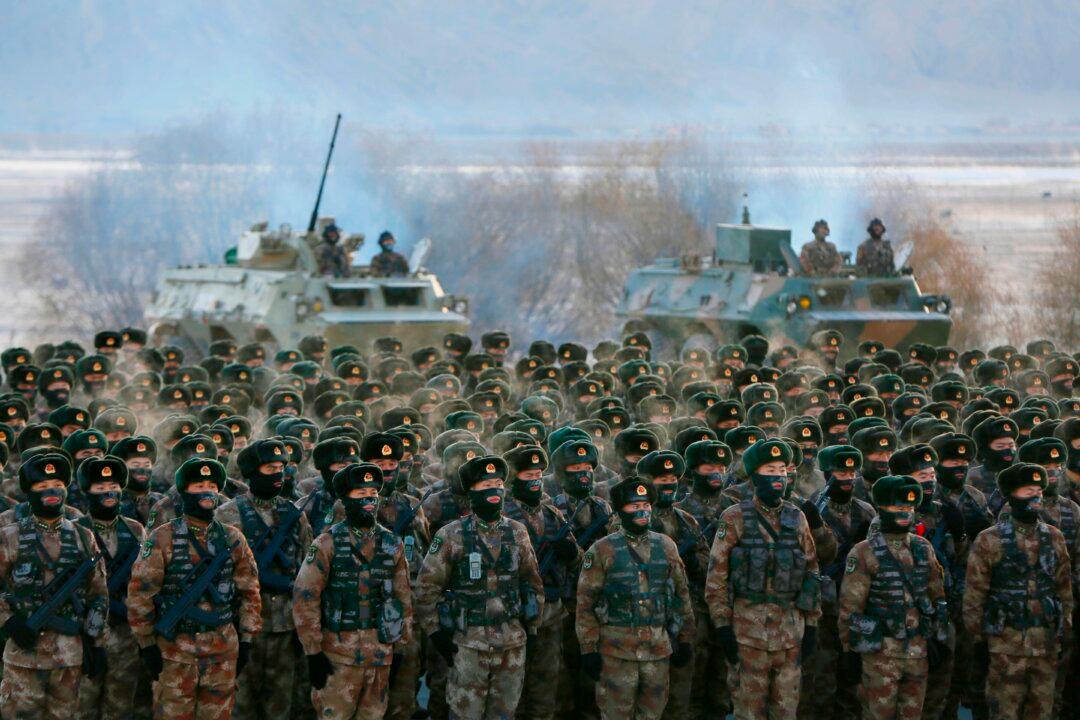Commentary
To build deterrence capacity in the Western Pacific, the U.S. military has to overcome
four tyrannies: distance, water, time, and scale.
These four tyrannies intuitively place the U.S. Navy and the U.S. Air Force as the “main effort” in
flexible deterrent options. The Navy and Air Force have the mobility and range to overcome these tyrannies. The Army does have a distinct role and contribution to the Navy and Air Force mission. In Department of Defense terms, the Army is the “supporting” force, and the Navy and Air Force are the “supported” forces.
As more evidence mounts of the Chinese regime’s intent to conduct some form of action in the Western Pacific, all of the military services need to be prepared for their part. The southern border and fentanyl are tools of the Chinese Communist Party’s “unrestricted warfare.” However, despite
thousands of Americans dying a month from fentanyl and legions of Chinese special operators in the United States, things are not happening fast enough for China.
There are three key capabilities that the U.S. Army can deliver to support the main effort of the Navy and Air Force in the Western Pacific. However,
the flat fiscal year 2025 (FY25) budget and Secretary of the Army decisions are undermining these contributory capabilities.
Special Operations
The U.S. Army is heavily involved with the deployment of the U.S. military to Taiwan. It’s now been announced and recognized that
Special Forces troops have been deployed to Kinmen, only 4,000 feet from China. The troops also appear to be on the Penghu Islands (a Taiwanese island county right off of Taiwan proper) and on Taiwan’s main island. The 1st Special Forces Group out of Ft. Lewis, Washington, appears to be the initial contributor to these operational detachments.
On Kinmen islands, the Special Operation forces could serve several possible roles. Foreign Internal Defense (FID) is a core Special Operations mission where local troops are trained to high levels of expertise, such as the use of long-range anti-material rifles and Javelin missiles to destroy any fast boats attempting to approach Kinmen.
There is only one airfield on Kinmen, and it would likely be a primary initial target for a Chinese invasion. Organizing the Taiwan forces to repel any raid on the airport via airborne or heliborne troops or spies is also a likely mission for the Army Special Forces. Another mission could be Special Reconnaissance, where the American Special Operators are the eyes and ears of the Indo-Pacific Commander, Admiral John Aquilino.
The 1st Special Forces Group has a battalion on Okinawa, a Japanese island very close to Taiwan, and the other three battalions are back at Ft. Lewis. The 1st Special Forces and other Special Operations units in the Western Pacific operate under the command and control of Special Operations Command Pacific (SOCPAC) at Camp Smith, Hawaii.
One additional crucial mission for the Special Forces is unconventional warfare (UW). This is where they would play a key role if Kinmen were possibly overrun in a Chinese invasion. In UW, the Special Forces Operational Detachments would help Taiwanese forces resist any occupying forces. The Secretary of the Army, of all things,
has targeted U.S. Army Special Operations for force-level cuts. This cut masks the real issue—
the worst recruiting and retention levels in the Army since the 1970s. The leadership at the Defense Department uses every possible excuse except for the real causal factor— the “w” word: “wokism.”
Long-Range Fires
Until the
Intermediate-Range Nuclear Forces (INF) Treaty, the U.S. Army had long-range missiles like Pershing, Lance, and even Nike Hercules (an air defense missile that could also be used for long-range surface-to-surface strikes). The INF Treaty limited missile ranges to about 300 miles. With the INF, the Army retained only the HIMARS rocket system and the
ATACMS (Army Tactical Missile System). They could reach out to about 70 miles and 190 miles, respectively. Deploying HIMARS on the forward Taiwan islands would extend its reach into mainland China. Additionally, utilizing ATACMS could target staging areas for People’s Liberation Army forces from Taiwan proper. Nearby Japanese and Philippine islands could base U.S. Army ATACMS units, which may provide covering fire onto parts of Taiwan facing China.
ATACMS is already being replaced by the
Precision Strike Missile (PSM), which adds about 60 miles of range. The real game changer is the new Typhon missile system, where the Army has taken the mature and proven Tomahawk cruise missile and the faster, high-performance SM-6 missile, a near hypersonic missile to reach targets up to 1,200 miles away.
With these missiles in a shipping container, a play on the
Russian/Chinese Club-K missile system, the Army can hit air bases and logistical hubs well into China from launch sites in the Philippines or Okinawa. The PSM and Typhon provide significant deterrent capabilities, which the Chinese military will take notice of. The Army’s momentum and rebirth of long-range fires are exciting, but it took a misstep in the FY25 budget request, down 6 percent—not a good message to be sending at this time.
Watercraft and Expeditionary Ports
The recent announcement by the Biden Team to use
JLOTS (Joint Logistics-Over-the Shore) port capabilities in Gaza has brought new focus to an Army mission and capability that has not received much attention. In the division of responsibilities in Joint (multi-service) Operations, the Army’s mission is to provide watercraft and expeditionary port capabilities.
The mobile causeway and offloading pontoon units are very important for large transport vessels to unload material. JLOTS will be necessary on the east coast of Taiwan for rapid unloading of transport vessels landing aid where the existing ports have been damaged. The Army is already using JLOTS
to build a port on the Batanes, a grouping of Philippine islands only about 80 miles from Taiwan.
Watercraft are small transport vessels like the
General Frank S. Besson Class Logistics Support Vessel or the
Runnymede Large Landing Craft. These and other Army watercraft play a crucial role in shuttling supplies and troops in and around the forward area. The Army is accelerating plans for more and newer watercraft to expand its ability to provide support in and around Taiwan, the Second Island Chain, including Palau, the Federated States of Micronesia, and the U.S. Territories of Guam, Tinian, and Saipan.
The Army is portraying a coming
renaissance in the Army watercraft mission set, yet the FY25 numbers tell a different story. The watercraft budget is hidden in the “Rail Float Containerization Equipment” line (whatever that means)
and takes a 25 percent hit. The story and the budget forensics are at odds. Special Operations, long-range fires, and theater watercraft support are key Army roles and missions to overcome the tyrannies of the Western Pacific, yet they are experiencing a worrisome downward budget trendline for some reason.
Views expressed in this article are opinions of the author and do not necessarily reflect the views of The Epoch Times.







